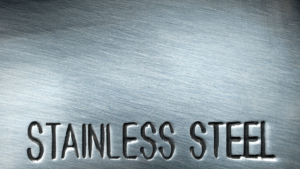
The history of stainless steel is an interesting one indeed. Obviously, here at SMM, we are fully invested in anything to do with our favourite metal, and the history of stainless steel is no exception!
It is fair to say that stainless steel can be considered one of the most important materials in history. Over the years it has been used for structures, decorations, cookware, tools, energy pipes, building services and countless more applications all over the world.
Stainless steel is one of the materials that the modern world relies on to function, and it is a vital resource.
Although we cannot probably conceive what life would be like without this metal, in the history of mankind, stainless steel is quite a newcomer. It was only invented in the early 20th century, whereas bronze, for example, has been around for an estimated 5000 years!
So, what is the history of stainless steel? Where did it come from? Who invented it? How did it rise to such prominence? Let’s find out…
The origins of stainless steel
When we look at the history of stainless steel, we must start with steel. While the precise ‘invention’ of steel cannot be determined, it is thought that steel can be traced back around 4000 years, to the iron age.
Following on from this, the Chinese civilisation from the 3rd century is usually considered to be the first mass producer of steel as they were ahead of industries in the West in terms of techniques of manufacture and usage. Steel production then was advanced in various areas around the globe, most notably in Middle Eastern cultures where they were developing steel production in the 11th century, and Sri Lanka which became known as a major supplier of steel.
Fast forward a few years, and by the 18th century, steel was being used for many diverse applications, such as weapons and tools. However, it was still considered to be a very expensive metal, so its usage was small.
This changed when it was discovered that coke, an advanced form of coal, could be used to enhance the manufacturing process meaning that iron could be made into steel in mass quantities. This definitely was a gateway into steel forming a core part of the modern world we live in.
Steel in the modern world
Once steel could be produced in mass quantities, it paved the way for bigger structures such as steam trains, farm equipment and even some buildings.
What followed was many different developments that were designed to make the manufacture, usage and applications of this alloy even more efficient. A landmark invention in England was the steam roller which was invented by Henry Cort. This had a huge impact on the efficiency of steel production, which thus made it even more affordable.
Farming was an industry that greatly benefitted from steel and some of the advances in steel usage had huge implications for food production. An example of this is the steel machinery and tools that allowed farmers to clear more space, plough more fields, and grow more crops.
While steel was getting more common, it was still expensive, and availability was still limited. Henry Bessemer changed this. In the 1850s, he designed an industrial system that allowed manufacturers to remove impurities more easily from iron. This meant that mass production of steel on a much larger scale was then possible. This paved the way for another inventor to take on the baton.
The creation of stainless steel or ‘rustless steel’
Harry Brearley was born in Sheffield and by the tender age of 12, Brearley was already working in the local steelworks, and he eventually became an expert in metallurgy. In 1908, two major steel companies joined created a state-of-the-art research laboratory and invited Brearley to lead the project.
This led to his 1913 invention of ‘rustless’ steel which is considered to be the first true stainless steel with a 12.8% chromium content. Chromium is the key ingredient because it gives the metal its tell-tale resistance to corrosion. Somebody suggested the term ‘stainless’ as opposed to ‘rustless’ and the much catchier name of ‘stainless steel’ stuck!
Milestones in the history of stainless steel
Further improvements and usage of stainless steel then occurred at a fairly rapid pace:
- In 1919, Elwood Haynes obtained a patent on martensitic stainless steel.
- Between 1919 and 1923, stainless steel was first used to manufacture surgical scalpels, tools, and cutlery in Sheffield.
- In 1925, a stainless steel tank was used to store nitric acid, thereby establishing the fact of this unique metal’s resistance to corrosion.
- 1929 saw William J. Kroll of Luxembourg to discover precipitation-hardening stainless steel.
- The hygienic application of stainless steel was found in 1929 when the first stainless steel fermenting vessel was used to brew beer.
- In the 1930s, the first stainless steel train was built in the USA.
- In 1930, duplex stainless steel was first produced in Sweden at the Avesta Ironworks.
- The first stainless steel aircraft was created in 1931.
- By 1935, stainless steel kitchen sinks were widely used in domestic and professional settings.
- In 1966, the first tidal power station with stainless steel turbine blades was completed.
- In the 1980s, the longest movable flood barrier in the world was built on the river Thames, with stainless steel as a key component.
- In 2010 the global production of stainless steel reached 31 million Mt.
So, there we have it – the history of stainless steel! There is no doubt that stainless steel will continue to be an essential part of many of the world’s foremost industries. With the increasing awareness of carbon emissions, stainless steel is once again being relied upon for new and innovative inventions and there are sure to be many applications for it that are still yet to be thought of.

